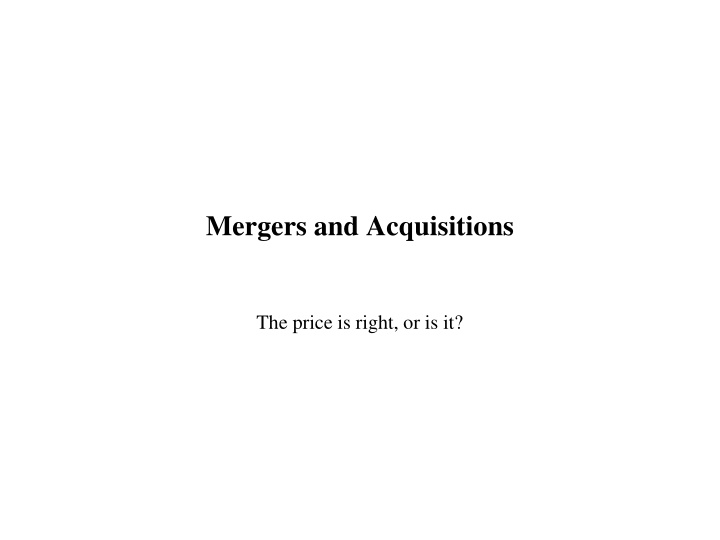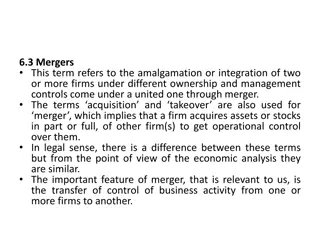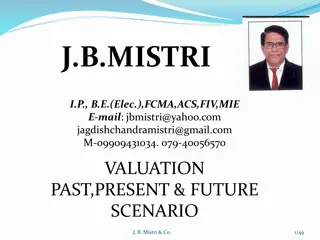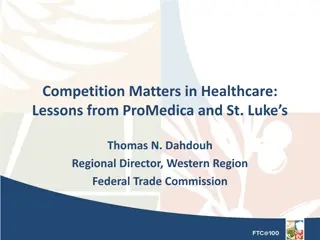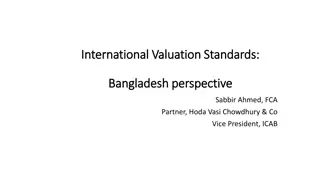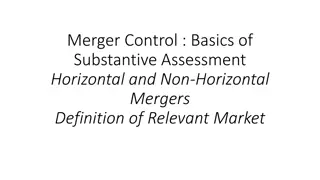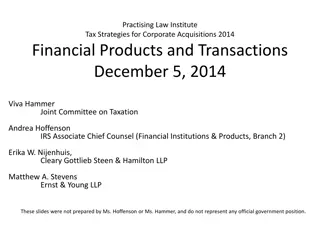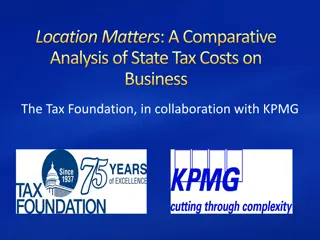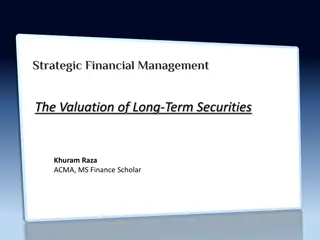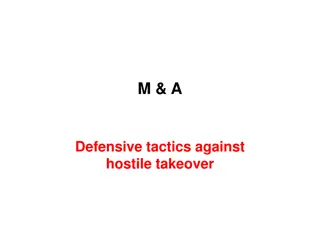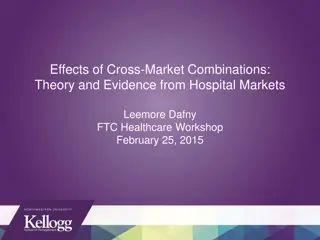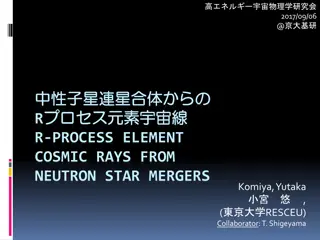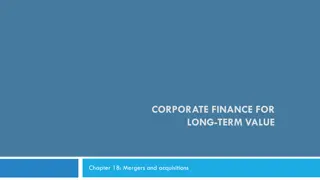Mergers and Acquisitions: Price, Definitions, Tax, Synergy & Valuation
Explore the world of mergers and acquisitions through definitions, tax implications, synergy benefits, and valuation methods. Learn about different types of mergers, tax considerations for a merger to be tax-free, the concept of synergy in mergers, and how to value mergers and acquisitions.
Download Presentation

Please find below an Image/Link to download the presentation.
The content on the website is provided AS IS for your information and personal use only. It may not be sold, licensed, or shared on other websites without obtaining consent from the author.If you encounter any issues during the download, it is possible that the publisher has removed the file from their server.
You are allowed to download the files provided on this website for personal or commercial use, subject to the condition that they are used lawfully. All files are the property of their respective owners.
The content on the website is provided AS IS for your information and personal use only. It may not be sold, licensed, or shared on other websites without obtaining consent from the author.
E N D
Presentation Transcript
Mergers and Acquisitions The price is right, or is it?
10 Largest Mergers & Acquisitions as of 8/11/1998 (Source: Dow Jones Newswire)
Mergers and Acquisitions: Some Definitions Merger or Consolidation Acquisition Acquisition of Stock Acquisition of Assets Takeover Proxy Contest Going Private
Mergers and Acquisitions: Some Definitions Horizontal Mergers Vertical Mergers Conglomerate Mergers
Mergers and Acquisitions: Tax Status To qualify for tax-free status, the merger must have a valid business purpose (not just to avoid taxes), and continue the equity interest of the target shareholders in the bidder. These conditions generally imply that the merger will be tax-free if the bidder offers shares of its firm for shares of the target firm in the transaction. The tax implications for mergers show up in the capital gains, if any, paid by the target firm s shareholders, and the write-up the bidding firm can use for depreciation purposes
Mergers and Acquisitions: Synergy What is synergy? The positive incremental net gain associated with the merger Cash Flows = EBIT - Sales - Taxes - Costs - Capital Spending Taxes - Capital Spending =
Mergers and Acquisitions: Synergy Sales Marketing Gains Media Programming Enhancements - Improved distribution Networks More balanced Product Mixes Strategic Benefits Market Power
Mergers and Acquisitions: Synergy Costs Economies of Scale Economies of Vertical Integration Complementary Resources
Mergers and Acquisitions: Synergy Taxes Net Operating Losses Unused Debt Capacity Surplus Funds Asset Write-Ups Capital Spending
Mergers and Acquisitions: How to Value the Deal Do not ignore available market values. Estimate only incremental cash flows. Use the correct discount rate. Be aware of transactions costs.
Mergers and Acquisitions: Deterrents to Value June 3, 1999 Wall Street Top Deal Makers Aren't the Best Matchmakers By ROBERT MCGOUGH Staff Reporter of THE WALL STREET JOURNAL Wall Street's top deal-making firms can boast about advising corporate America on big tender offers and raking in huge merger fees. So, they also can brag about putting together superior deals, right? Not quite. The stocks of acquirers whose tender offers were handled by top-tier investment banks -- those doing the most merger-advisory business -- actually performed worse over the next three years than the stocks of acquirers advised by less-active merger-advisory firms, according to Raghavendra Rau, a Purdue University professor who studied the subject.
Mergers and Acquisitions: Deterrents to Value After the Wedding In the three years following tender offers, acquiring firms advised by top-tier investment banks often fared worse in the stock market than clients advised by lower-ranked investment banks. Clients of: Return in Excess of Benchmark (In percentage points) First-tier banks Second-tier banks Third-tier banks 20.16 0.63 6.19 Note: Investment-bank rankings are based on the banks' annual dollar amount of advisory transactions for acquiring companies from 1980 through 1994. Returns are measured from the deal's closing date. Source: Raghavendra Rau, Krannert Graduate School of Management, Purdue University
Mergers and Acquisitions: Deterrents to Value Why the disparity among advisers? A larger percentage of the fee of the top-tier investment banks was tied to completing the deal than for lower-ranked rivals, the study found. First-tier banks got 73% of their pay in tender offers from contingency fees, compared with 61% for second-tier banks and 64% for third-tier banks. The higher a contingency fee paid by an acquirer in a tender offer, the worse its stock generally performed over the next 12 months. Clients of first-tier investment banks also tended to pay a high premium over the stock-market price to acquire their targets. For instance, in tender offers, the study found that clients of first-tier investment banks paid a median premium of 56% above the market price, compared with 38% for clients of third-tier banks.
Mergers and Acquisitions: Deterrents to Value Citigroup: Is This Marriage Working? Business Week, June 7, 1999 The Citigroup merger is going reasonably well. But there are signs of tension between Weill and Reed Ask John S. Reed about being co-CEO of Citigroup with Sanford I. Weill, and he volunteers a revealing story. It concerns a Spanish bank created by a merger that, like Citigroup (C), was headed by co-CEOs. At first, the Spanish bankers were ''good buddies,'' but they soon got into a power struggle. One CEO died, but another man replaced him and the fighting continued. Finally, the board settled on one boss and the bank thrived. The lesson for Citigroup, the Spanish CEO told Reed, was simple. Have the board flip a coin in public and let the winner be CEO. That way there's no winner and no loser, just blind luck. Reed made a point of telling Weill this story. Says Reed, with his characteristic candor: ''Sandy didn't like it.'' Reed is not suggesting a coin flip. But just in case anyone missed the message of the story, Reed leaves no doubt that sharing the top job is tough. ''I don't think Sandy and I have yet created much of a problem,'' Reed says. ''But co-CEO's are hard.'' One year after the integration of Citicorp and Travelers began in earnest, there's evidence that the relationship is fraying. Saudi Prince Alwaleed bin Talal, whose 4.8% of Citigroup stock makes him the largest single shareholder, says he learned three weeks ago that coordination between Weill and Reed has not been as close as it was when the merger was announced. Says the Prince: ''I will try to see them both in July during my trip to the U.S., but I hope it will be resolved by then one way or the other.'' Citigroup's next board meeting is the third week in July.
Mergers and Acquisitions: Defense Mechanisms Major defense tactics against mergers include: The corporate charter - super majority amendments Standstill agreements - greenmail and targeted repurchases Exclusionary self-tenders Poison pills - share rights plans - flip-over provisions Leveraged Buyouts Other defense tactics Golden parachutes Poison puts Crown jewels White knights - white squires - whitemail Lockups
Mergers and Acquisitions: Stockholders Abnormal Returns Takeover Technique Tender Offer Merger Proxy Contest Target 30% 20% Bidder 4% 0% NA 8% (Source: Jensen and Ruback, JFE, 1983)
Mergers and Acquisitions: What do Stockholders Abnormal Returns Tell Us and How are they Measured? Stockholders abnormal returns around mergers measure the firm- specific effects of the merger announcement(s) on the target and bidding firms. One way to measure these abnormal returns is by
Mergers and Acquisitions: Abnormal Returns for Mobil and Exxon whose s are, respectively, 0.51 and 0.67
Mergers and Acquisitions: Abnormal Returns for Mobil and Exxon Questions about abnormal returns: The announcement of the merger was made on 12/01/1998, but was that the first information the market had about it? Rumors of this merger? Actual mergers or rumors of other mergers in this industry? What do abnormal returns mean about synergy? What do abnormal returns say about the likelihood of the success of the offer?
Mergers and Acquisitions: Abnormal Returns for Mobil and Exxon Assuming rumors about the Exxon/Mobil merger surfaced on 11/25/1998, what are the abnormal returns for each company? What is the aggregate dollar value change in firm value for each company? (Mobil has 787 million shares outstanding; Exxon has 2,478 million)
Mergers and Acquisitions: Abnormal Returns for Mobil and Exxon What is the market s assessment of the likelihood that this merger will be completed at the price Exxon is willing to pay? (1.32 shares of Exxon was offered for each share of Mobil.)
Mergers and Acquisitions: Value Creation for Mobil and Exxon The companies projected an annual operating cost savings of $2.8 billion from the merger. At what rate should the savings be discounted? (Exxon had $6,912 million in long-term debt, and Mobil had $3,957 million. The rate on long-term government bonds at the time was about 5.20%) If the savings is realized every year for the next 10 years, can the savings justify the premium Exxon is paying?
Mergers and Acquisitions: Value Creation for Mobil and Exxon The companies also projected that capital spending would be cut by 10%. The projected combined capital budget for next year is $13 billion. If that expense is expected to be the same every year for the next 10 years and the savings will accrue every year over that period, can the savings in capital spending justify the premium Exxon is offering? (Assume depreciation is straight line over 10 years.)
Mergers and Acquisitions: Value Creation for Mobil and Exxon To what do you attribute the price that Exxon is willing to pay for Mobil?
